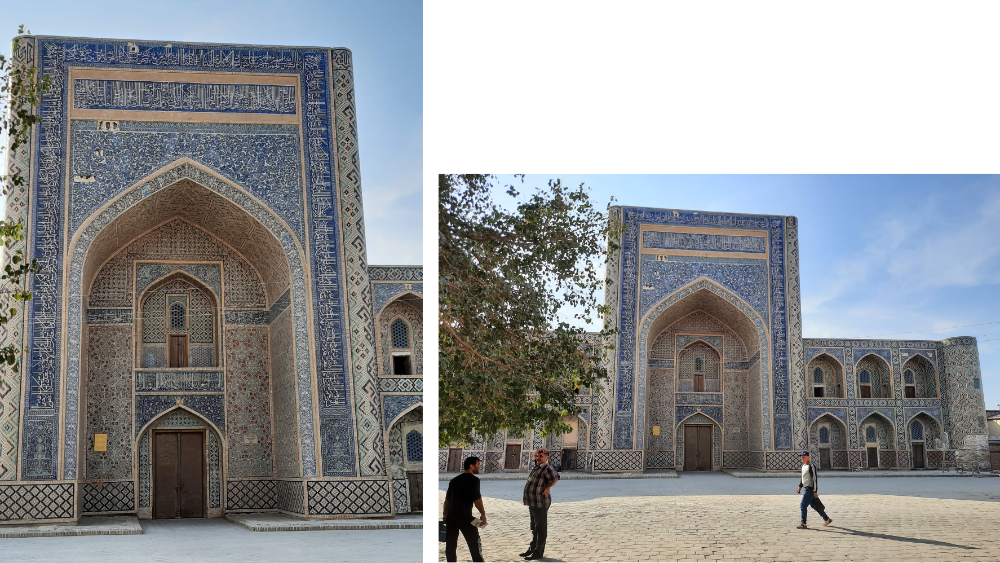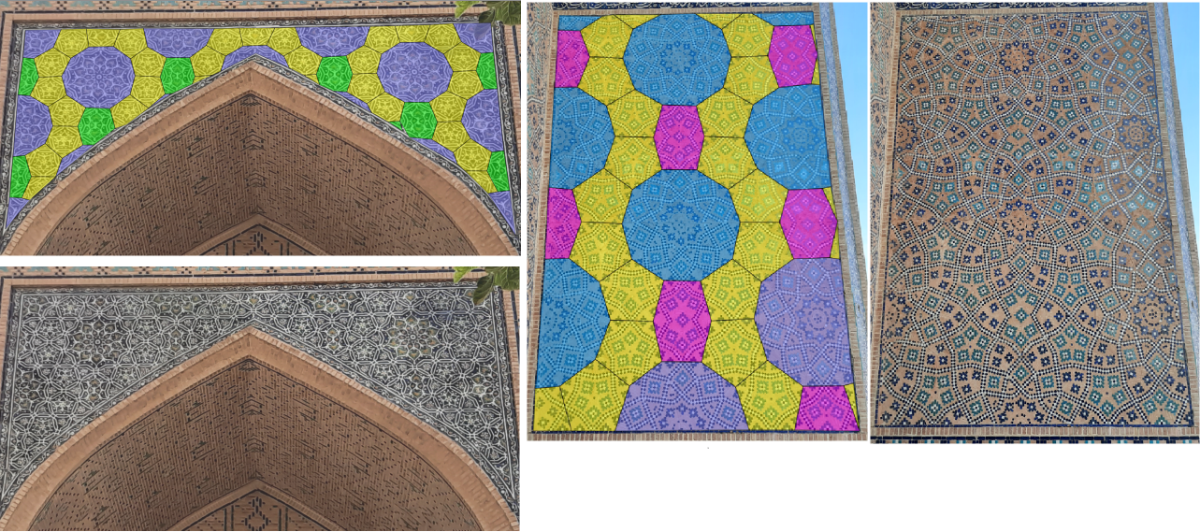Abdullah Khan madrassa - gp
The Abdullah Khan Madrasa (1598-99) is located southwest of the erstwhile Registan, facing the earlier Madari Khan madrassa.
Remarkable is hte geometrical decoration of the pishtaq, that looks different than others.

On first sight you can't get a clou of it, but in fact it's constructed out of just three forms: decagons, pentagons and hexagons.
More, this scheme of polygons isn't unique. It's the same as on the spandrel of the eastern iwan of the Kalon mosque.
It's remarkable that patterns that look different in fact are designed the same way. This shows that the polygons just create a frame for a pattern, leaving a broad range of possibilities.

Zooming in to the pâttern you can see that no effort at all is made to create clear star figures. Inside of all polygons similar figures are placed creating a rather diffuse whole, while in fact it has got a very clear structure.
Reconstructing the lines in the polygons you can see:
- In the pentagons the middles of the edges are connected with vertices.
- The lines in the pentagon continue in the decagons and barrel shaped hexagons.
- In these hexagons the lines create a dodecagonal shaped form.
- In the decagons a first star is created (blue in the applet). Within this first star, starting from the inner vertices a second star is created (purple).
- These stars create little areas with their own symmetry in which block-shaped motives are placed.